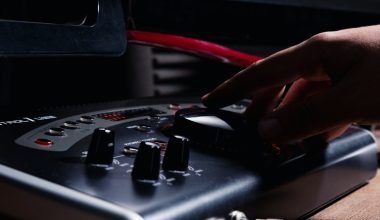Recording music at home is a dream come true for many artists. The ability to produce high-quality tracks without the hefty price tag of a professional studio is a significant advantage. With today’s advancements in technology, home studios have become more accessible, allowing independent artists to take full control of their creative process. However, while the benefits are clear, the road to a professional-sounding home recording is fraught with challenges. Mistakes artists make while recording at home can often lead to subpar results that don’t reflect the true potential of the music.
Whether it’s the allure of quickly releasing new material or simply not knowing the pitfalls, many artists fall into the same traps. These mistakes can range from technical errors, like poor microphone placement, to more strategic missteps, such as rushing the process. In this blog, we’ll delve into these common issues and provide actionable tips to help you avoid them. By the end of this article, you’ll have a solid understanding of how to navigate the complexities of home recording and produce music that sounds polished and professional.
Lack of Proper Room Treatment
The environment you record in plays a critical role in the quality of your recordings. One of the most common mistakes artists make while recording at home is neglecting room treatment. Unlike professional studios, most home environments are not designed with acoustics in mind. Bare walls, hard surfaces, and the lack of soundproofing can lead to problems such as unwanted echoes, flutter echoes, and a general lack of clarity in your recordings.
The absence of proper room treatment can cause frequencies to bounce around uncontrollably, which affects the accuracy of what you hear and record. This is especially problematic when you start mixing because you might make decisions based on what you’re hearing in a poorly treated room, rather than what is actually there.
How to Avoid It:
- Acoustic Panels: Acoustic panels are an effective way to control reflections in your recording space. These panels can be placed on the walls, ceiling, and even on the floor to absorb sound and prevent it from bouncing back into the microphone.
- Bass Traps: Low frequencies, often referred to as bass, can accumulate in the corners of a room, leading to a muddy or boomy sound. Installing bass traps in the corners of your room can help to manage these frequencies and give your recordings a more balanced sound.
- Diffusers: While acoustic panels absorb sound, diffusers scatter it, which can help to reduce the impact of flutter echoes. These are particularly useful in larger rooms where sound waves have more space to bounce around.
By taking the time to treat your recording space, you’ll create a controlled environment that allows you to capture clear, accurate recordings. This will save you time and frustration during the mixing process, as you won’t be fighting against the acoustics of the room.
Poor Microphone Placement
The placement of your microphone can make or break your recording. It’s not just about having a good microphone; it’s about using it correctly. A major mistake artists make while recording at home is placing the microphone too close or too far from the sound source. This can lead to a variety of issues, such as clipping (distortion caused by an excessively high input level) or a distant, weak sound that lacks presence.
How to Avoid It:
- Distance: For vocals, a typical starting point is to place the microphone about 6-12 inches away from your mouth. If the microphone is too close, you might get a “boomy” sound due to the proximity effect, where low frequencies are exaggerated. If it’s too far, your voice might sound thin and distant.
- Pop Filter: A pop filter is a simple yet essential tool for any vocalist. It reduces the harshness of plosive sounds, which are the ‘p’ and ‘b’ sounds that can cause unwanted pops in your recording.
- Microphone Angling: The angle at which the microphone is placed relative to the sound source also affects the recording. For example, angling the microphone slightly off-axis can reduce harshness and sibilance in vocals.
To get the best results, experiment with different microphone placements and listen back to your recordings. The right placement will depend on the type of microphone you are using and the sound you are trying to capture.
Ignoring Gain Staging
Gain staging is one of the most crucial aspects of recording, yet it’s often overlooked by many home recording enthusiasts. One of the frequent mistakes artists make while recording at home is not properly setting the gain levels. This can result in recordings that are either too quiet, leading to a poor signal-to-noise ratio, or too loud, which can cause distortion and clipping.
Gain staging is about setting the optimal input level for each part of your recording chain—from the microphone to the audio interface to the digital audio workstation (DAW). If the gain is set too high at any stage, it can cause distortion that cannot be removed later. If it’s too low, you may need to boost the volume during mixing, which can introduce noise and degrade the quality of your recording.
How to Avoid It:
- Set Proper Input Levels: When setting up your microphone, adjust the gain on your audio interface so that the loudest parts of your performance peak around -6dB to -3dB. This provides enough headroom to prevent clipping while ensuring a strong signal.
- Use a Preamp: If your recordings are too quiet, consider using a preamp to boost the signal before it reaches your audio interface. A preamp can add warmth and character to your recordings while ensuring that the signal is strong enough.
- Monitor Levels Consistently: Keep an eye on your levels throughout the recording process. Use the meters on your audio interface or within your DAW to ensure that your levels stay within a healthy range.
Proper gain staging is essential for achieving a clean, professional sound. By paying attention to your levels at every stage of the recording process, you can avoid many of the issues that plague home recordings.
Not Using Reference Tracks
Reference tracks are an invaluable tool during the recording and mixing process, yet many artists overlook their importance. A common mistake artists make while recording at home is failing to use reference tracks to guide their work. Reference tracks are professionally mixed and mastered songs that you can compare your work against to ensure that your mix is on the right track.
Using a reference track can help you identify areas where your mix may be lacking, whether it’s in the low-end, mid-range, or high frequencies. It can also help you achieve a more balanced and polished sound, as you can adjust your mix to match the tonal balance and clarity of the reference track.
How to Avoid It:
- Choose a Suitable Reference Track: Select a track in a similar genre or style that you admire. Make sure it’s a high-quality, professionally mixed and mastered track that you can use as a benchmark.
- Compare Regularly: During the recording and mixing process, take regular breaks to compare your work against the reference track. Listen for differences in the frequency balance, stereo imaging, and overall loudness.
- Use Tools Like Spectrum Analyzers: Spectrum analyzers can visually display the frequency distribution of your track compared to the reference track. This can help you make more informed decisions about EQ adjustments and other mix elements.
By using reference tracks, you can maintain perspective during the recording and mixing process. This will help you produce music that not only sounds good in your home studio but also translates well on other systems.
Neglecting Proper File Organization
When creativity strikes, it’s easy to dive into recording without thinking about organization. However, one of the biggest mistakes artists make while recording at home is poor file organization. Disorganized files can lead to lost takes, confusion during editing, and a significant loss of productivity.
Imagine spending hours recording the perfect take, only to lose it among a sea of poorly labeled files. Or worse, accidentally deleting an important session because it was saved in the wrong folder. Proper file organization is not just about saving time; it’s about preserving the integrity of your project from start to finish.
How to Avoid It:
- Create a Clear Folder Structure: Start by creating a main project folder, and within that, create subfolders for each aspect of your project. For example, you might have folders for “Raw Takes,” “Edited Takes,” “Final Mixes,” “Session Files,” etc.
- Consistent Naming Conventions: Develop a naming convention for your files that is clear and descriptive. For example, use names like “Vocal_Take1” or “Guitar_Rhythm_Final.” This makes it easy to find specific files when you need them.
- Backup Regularly: Always back up your files in multiple locations, such as an external hard drive or cloud storage. This ensures that you won’t lose your work due to hardware failure or other unforeseen issues.
Good organization might seem tedious, but it pays off in the long run. It allows you to focus on the creative aspects of recording without worrying about losing your work or getting bogged down in disorganized files.
Rushing the Process
In the excitement of creating new music, many artists fall into the trap of rushing through the recording process. This is one of the most common mistakes artists make while recording at home. The desire to quickly get new material out can lead to cutting corners, which often results in subpar recordings that require extensive fixing during mixing, or worse, complete re-recording.
Rushing the recording process can lead to several issues, including poorly performed takes, technical mistakes, and missed creative opportunities. In a home studio environment, where time is often not a limiting factor, it’s essential to take the time to get things right.
How to Avoid It:
- Set Realistic Goals: Instead of trying to record an entire song in one session, break the process down into manageable chunks. Focus on getting one element right before moving on to the next.
- Take Breaks: Long recording sessions can lead to fatigue, which can affect your performance and decision-making. Take regular breaks to rest your ears and mind.
- Listen Critically: After each take, listen back carefully. If something doesn’t sound right, don’t be afraid to redo it. Quality should always come before speed.
Patience is key to producing high-quality recordings. By taking your time and being methodical, you can ensure that every aspect of your recording is up to par, reducing the need for extensive editing later on.
Not Paying Attention to Background Noise
Background noise is a silent killer of good recordings. One of the mistakes artists make while recording at home is not controlling background noise. Unlike professional studios, home environments are rarely completely silent. Sounds like the hum of your computer, air conditioning, or even distant traffic can be picked up by sensitive microphones, degrading the quality of your recordings.
Background noise can be particularly problematic when recording quieter passages or during mixing when you start to boost certain frequencies. It can also be challenging to remove without affecting the overall quality of the recording.
How to Avoid It:
- Choose a Quiet Room: Select the quietest room in your home for recording. If possible, choose a room that is away from noisy appliances or outside traffic.
- Use Noise Reduction Tools: Many DAWs offer noise reduction plugins that can help minimize background noise. However, these should be used sparingly, as they can sometimes degrade the quality of the recording.
- Record During Quiet Times: Consider recording during quieter times of the day, such as early morning or late at night, when there is less ambient noise in your environment.
By paying attention to background noise, you can significantly improve the clarity and quality of your recordings. This will make the mixing process easier and result in a more professional final product.
Over-Processing During Mixing
The availability of countless plugins and effects can be both a blessing and a curse. One of the mistakes artists make while recording at home is over-processing their tracks during mixing. It’s easy to get carried away with adding reverb, delay, compression, and other effects, but too much processing can lead to a mix that sounds unnatural or overdone.
Over-processing can also lead to phase issues, loss of dynamics, and a mix that lacks clarity and focus. Remember, sometimes less is more, and subtlety is often the key to a great mix.
How to Avoid It:
- Start with the Basics: Before reaching for the effects, focus on getting the levels and panning right. A well-balanced mix doesn’t need a lot of effects to sound good.
- Use Effects Sparingly: Apply reverb, delay, and other effects with a light touch. Use them to enhance the sound, not to overwhelm it.
- Preserve Dynamics: Avoid over-compressing your tracks. Dynamics are what make music engaging, so be careful not to squash them with too much compression.
The goal of mixing is to enhance the recording, not to alter it beyond recognition. By using effects judiciously and focusing on the basics, you can create a mix that is both dynamic and polished.
Skipping the Mastering Stage
Mastering is the final step in the music production process, and it’s crucial for ensuring that your track sounds polished and professional across all playback systems. Skipping the mastering stage is one of the significant mistakes artists make while recording at home. Without mastering, your track may sound unbalanced, too quiet, or inconsistent when played on different devices.
Mastering involves making subtle adjustments to the overall mix, such as equalization, compression, and limiting, to ensure that the track sounds cohesive and professional. It also involves adjusting the track’s loudness to match industry standards, so it competes well with other tracks on streaming platforms.
How to Avoid It:
- Use Mastering Plugins: If you’re handling mastering yourself, consider using mastering plugins like iZotope Ozone or Waves’ L3 Multimaximizer. These plugins offer presets that can help you achieve a polished sound with minimal effort.
- Hire a Professional Mastering Engineer: If you’re serious about your music, investing in a professional mastering engineer can be well worth it. They bring a fresh perspective and the expertise needed to bring out the best in your mix.
- Test on Multiple Systems: Before finalizing your master, test it on various playback systems, such as headphones, car speakers, and home stereo systems, to ensure it sounds good everywhere.
Mastering is not just about making your track louder; it’s about making it sound the best it can on all playback systems. Don’t skip this crucial step, as it can make the difference between a good track and a great one.
Ignoring Feedback
No matter how experienced you are, it’s easy to become too close to your work and miss flaws that others might notice. One of the biggest mistakes artists make while recording at home is ignoring feedback from others. Getting a fresh perspective can provide valuable insights that can improve the final product.
It’s natural to feel protective of your work, but being open to constructive criticism is an essential part of the creative process. Feedback can highlight areas that need improvement and offer new ideas that you might not have considered.
How to Avoid It:
- Share Your Work: Before finalizing your track, share it with a few trusted friends or fellow musicians. Ask them to listen critically and provide honest feedback.
- Be Open-Minded: Approach feedback with an open mind. You don’t have to implement every suggestion, but consider each one carefully.
- Use Feedback Constructively: Use the feedback to make informed decisions about your mix. If multiple people point out the same issue, it’s worth addressing.
Feedback is an invaluable part of the creative process, helping you see your work from a new perspective and refine it to its fullest potential. By being open to feedback, you can ensure that your final product is the best it can be.
Conclusion
Recording at home offers unparalleled convenience and creative freedom, but it also presents a unique set of challenges. By being aware of the common mistakes artists make while recording at home and taking steps to avoid them, you can ensure that your recordings are of the highest quality. Whether it’s paying attention to room acoustics, properly organizing your files, or taking the time to master your tracks, each step of the process is crucial in achieving a professional sound.
Remember, the key to successful home recording is not just in the equipment you use but in the care and attention you give to every detail. By avoiding these common pitfalls, you can produce music that truly reflects your artistic vision and sounds great on any platform.
For further reading, explore these related articles:
- Exploring Music as a Career: Pathways, Challenges, and Strategies
- 8 Skills to Learn as an Indie Artist in 2024
- Exploring the Latest Instagram & Facebook Updates for Artists in 2024
For additional resources on music marketing and distribution, visit Deliver My Tune.






